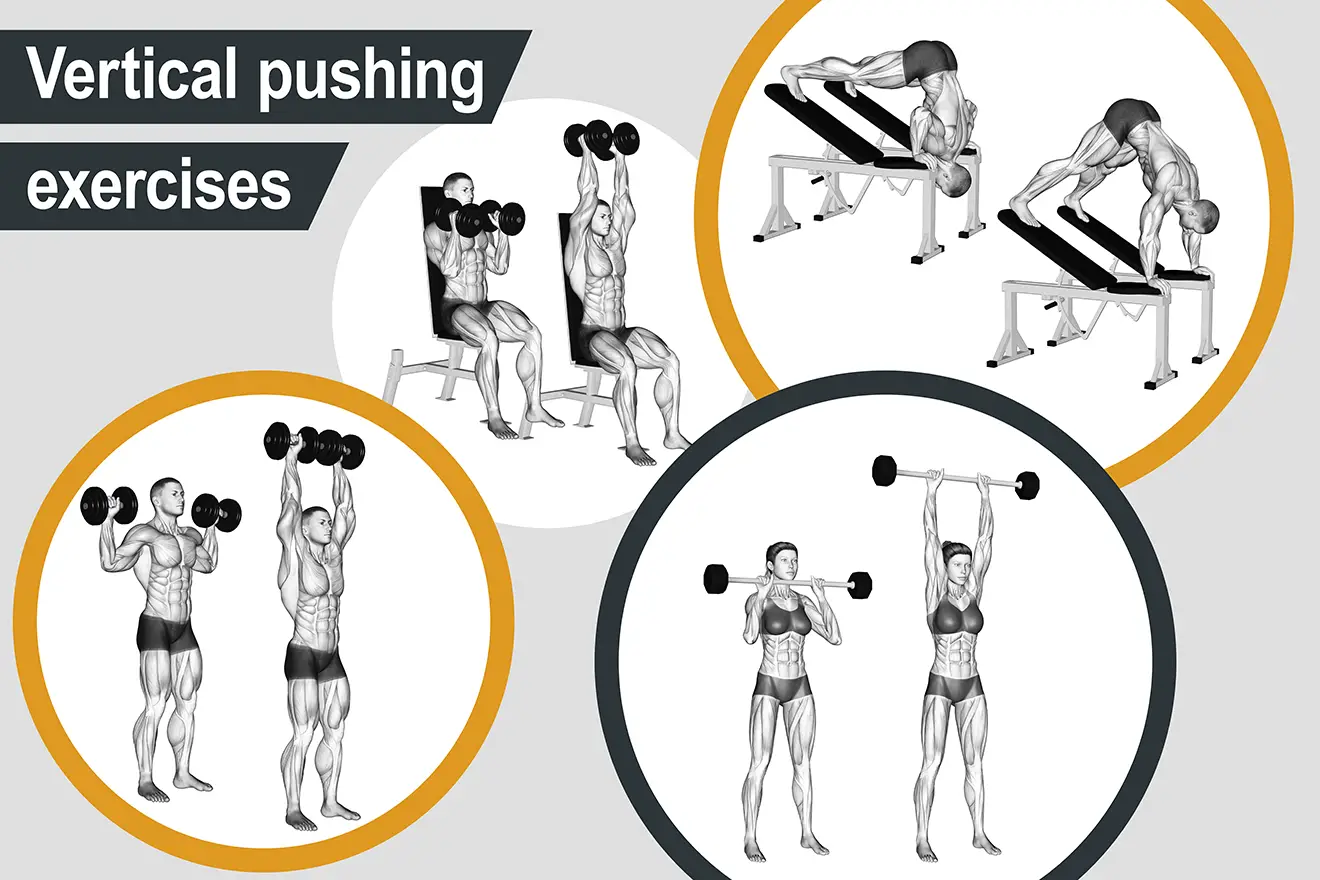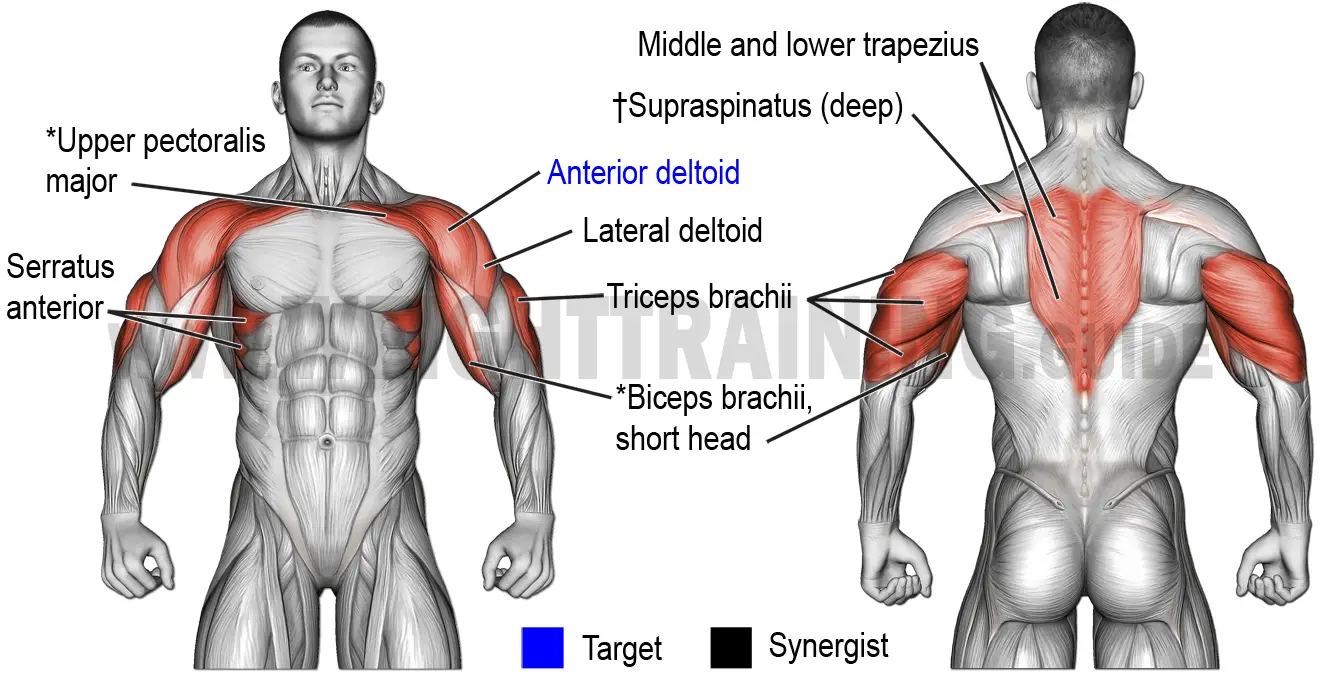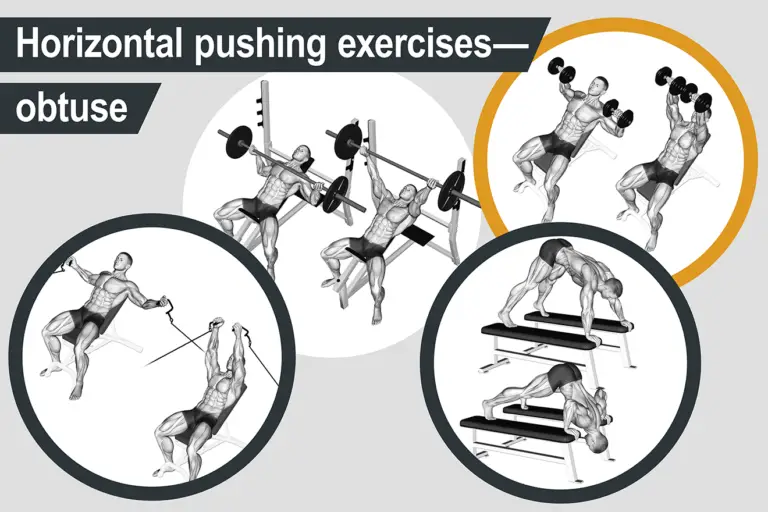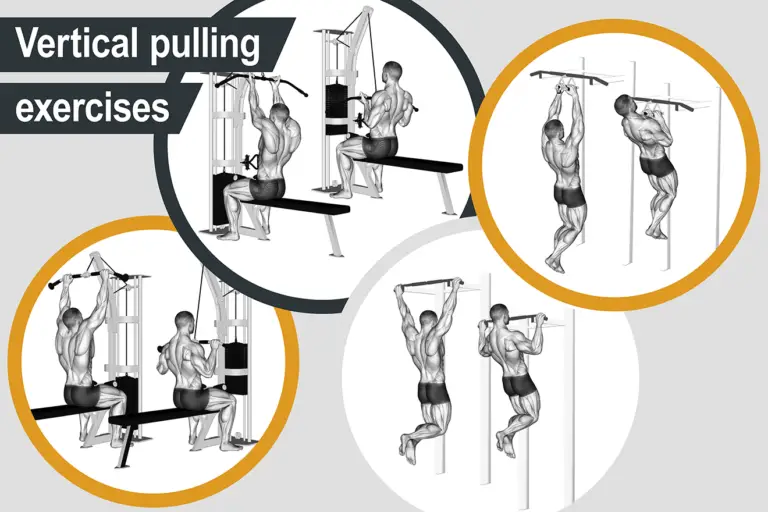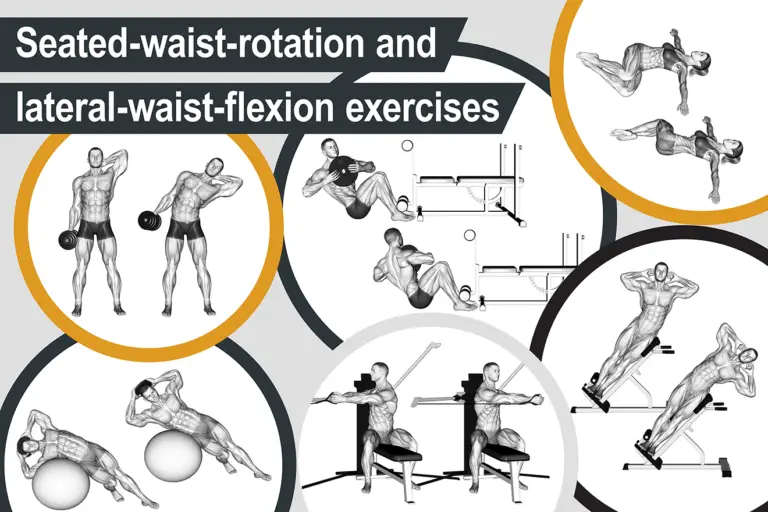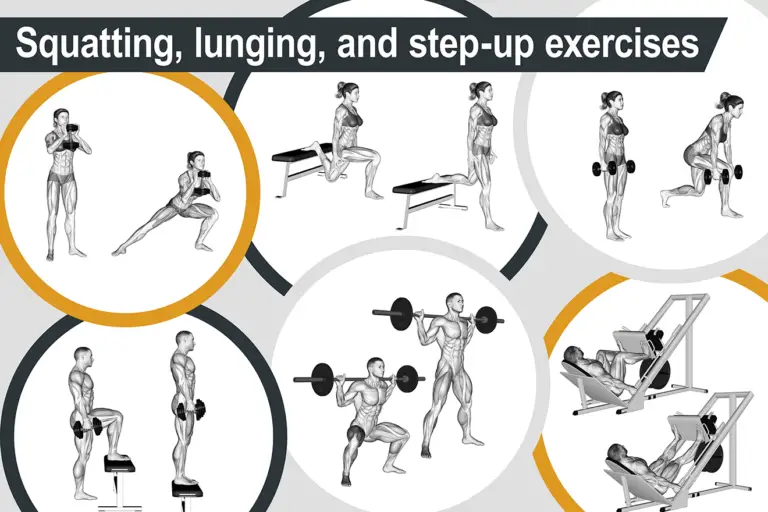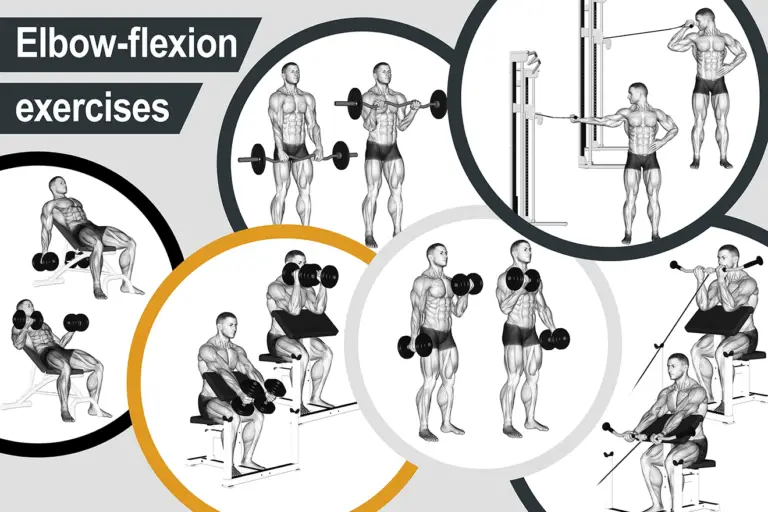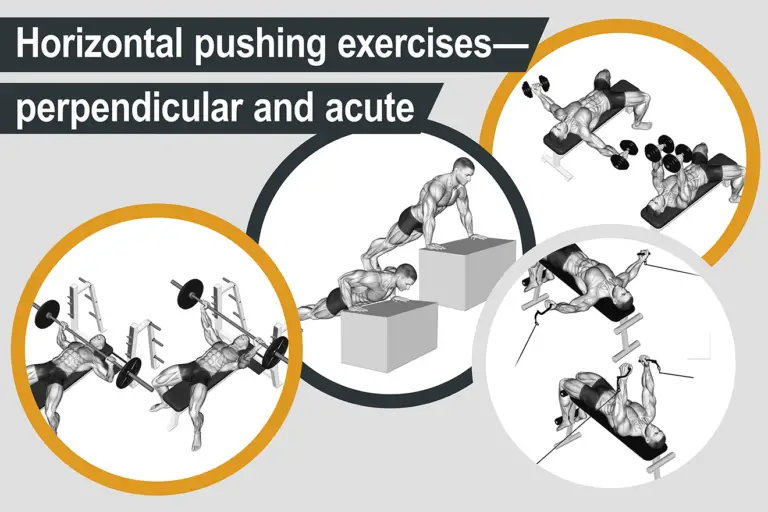Vertical pushing exercises
Movement patterns and classification
Vertical pushing exercises (for example, Figure 1) involve either pushing a weight vertically upward, over your head, or pushing your body up and away from a stable surface with your torso in an inverted (upside-down) position. As two joints are involved (your shoulder and elbow), vertical pushing exercises are classified as compound.
If your upper arms are held directly out to your sides, as in the standing dumbbell shoulder press (Figure 1, A), the vertical pushing exercise will combine shoulder abduction with elbow extension. If your upper arms are angled directly in front of you, as in the seated elbows-in dumbbell overhead press (Figure 1, B), the exercise will combine shoulder flexion with elbow extension. If your upper arms are angled somewhere between these two extremes, as in the decline pike press and the barbell overhead press (Figure 1, C and D, respectively), the exercise will combine shoulder abduction with shoulder flexion and elbow extension.
Figure 1. Examples of vertical pushing exercises. A. standing dumbbell shoulder press; B. seated elbows-in dumbbell overhead press; C. decline pike press; D. barbell overhead press.
Muscle activation
All vertical pushing exercises target your anterior deltoid (Figure 2). If your upper arms are angled somewhere between the two extremes of directly out to your sides and directly in front of you, the exercise will synergistically activate your lateral deltoid, supraspinatus, triceps brachii, middle and lower trapezius, serratus anterior, upper pectoralis major, and (weakly) the short head of your biceps brachii. If your upper arms are held directly out to your sides, your upper pectoralis major and the short head of your biceps brachii will not be synergistically activated. If your upper arms are angled directly in front of you, your supraspinatus will not be synergistically activated.
Figure 2. Main muscles activated by vertical pushing exercises. *Not a synergist if your upper arms are held directly out to your sides. †Not a synergist if your upper arms are held directly in front of you.

